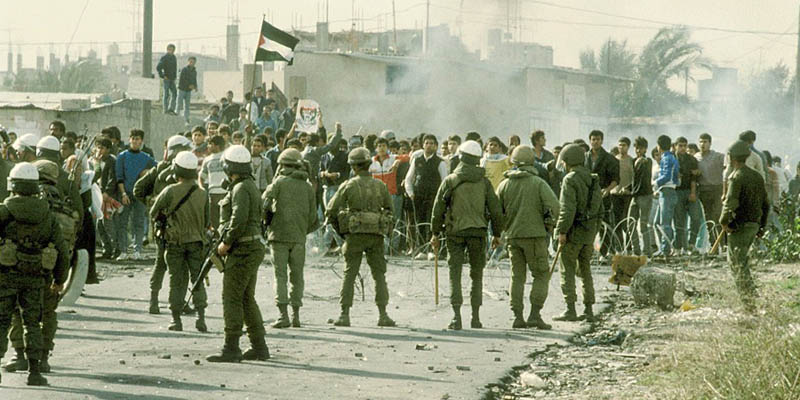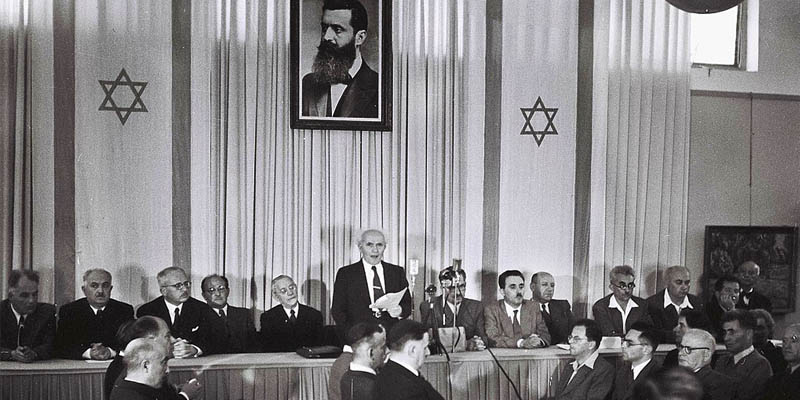We explore the conflicts in the Middle East, their origins and history. In addition, we discuss the countries involved and the role of major powers.

What are the conflicts in the Middle East?
The conflicts in the Middle East are a series of wars and violent events due to political, religious, and territorial reasons. These conflicts became more acute following World War II (1939-1945) in parts of the Arab and Muslim world encompassing western Asia and the northeastern tip of Africa.
Among the conflicts in the Middle East are:
- The Arab-Israeli wars (since 1948)
- The Islamic Revolution in Iran (1979)
- The Iran-Iraq War (1980-1988)
- The Gulf War (1990-1991)
- The invasions of Afghanistan by the Soviet Union (1979-1989) and the United States (2001-2021)
- The Iraq War (2003-2011)
- The Syrian civil war (since 2011)
- The activities of the Islamic State organization (since 2013).
Until the end of World War I (1914-1918), most of the Middle East was under the rule of the Ottoman Empire. After its defeat, the United Kingdom and France agreed, through the Sykes-Picot Agreement, to share control over the territories previously dominated by the Ottomans.
In addition to Egypt, which had become a British protectorate in 1914, the United Kingdom obtained the "mandate" over Iraq, Palestine, and Transjordan (later called Jordan), while France was allotted the "mandate" over Syria and Lebanon.
Some Middle Eastern countries attained independence in the interwar period (like Egypt and Iraq) while others, after World War II (such as Syria, Transjordan, and Lebanon). However, the creation of the State of Israel in 1948 disrupted the region's stability and gave rise to the Arab-Israeli conflict.
- See also: Arab-Israeli conflict
The Arab-Israeli conflict
Origins of the Arab-Israeli Conflict

The origins of the Arab-Israeli conflict trace back to the late 19th century with the emergence of the Zionist movement, which aimed to establish a state for the Jewish people. Theodor Herzl (1860-1904), Austro-Hungarian writer of Jewish descent and founder of Zionism, advocated the return of the Jews to Israel as a solution to the discrimination and persecution they suffered in Europe.
Prior to World War I, groups of European Jews began to peacefully settle in the Palestine region, which was part of the Ottoman Empire. The Holocaust, perpetrated by the Nazi regime in Europe during World War II, which claimed the lives of millions of European Jews, precipitated the Jewish exodus to a land that had been inhabited by Palestinian Arabs for centuries.
Following World War II, confrontations arose in the British Mandate of Palestine between groups belonging to two populations claiming control over the territory: on the one hand, more than one million Palestinian Muslim Arabs, and on the other, over half a million Jews, who had arrived mostly from Europe.
After months of violent riots, the UN (United Nations) agreed on a Partition Plan for Palestine on November 29, 1947. According to this plan, the territory of Palestine was to be divided into three parts: a Jewish state, an Arab state, and the city of Jerusalem, under UN control.
The countries comprising the Arab League rejected the plan because the partition made a disproportionate division between the amount of territory and the number of inhabitants of each nation. Nevertheless, when the British Mandate of Palestine ended, the State of Israel was officially created.
Main confrontations of the Arab-Israeli conflict
On the same day that the British withdrew their troops from Palestine and the State of Israel was created on Palestinian territory, the neighboring Arab countries Egypt, Transjordan, Syria, Libya, and Iraq attacked the newly formed state. Thus began the first Arab-Israeli war (1948-1949), which ended with Israel's victory over the Arab countries.
As a result, the new State of Israel annexed 78% of the former Palestinian territory (instead of the 55% proposed by the UN). The main consequence of this first armed conflict was the mass expulsion of the Arab population from the territories of the new State of Israel and their settlement as refugees in neighboring countries.
In the decades that ensued, the State of Israel confronted its neighboring countries in the Suez Crisis (1956), the Six-Day War (1967), and the Arab-Israeli War of 1973. In turn, exiled Palestinian Arabs organized their struggle for the recovery of the territories. The Palestine Liberation Organization (PLO) emerged as the most important organization representing the interests of exiled Palestinians.
In 1978 and 1979, the Camp David Accords and the peace agreement between Egypt and Israel were signed, through which the borders between the two countries were defined and Israel returned territories it had annexed in previous confrontations.
In the late 1980s, the Palestinian population in the Gaza Strip and the West Bank began a series of protests known as the "First Intifada" against the increasing land occupation by Jewish settlers. In 1993, the PLO and the State of Israel signed peace through the Oslo Accords.
These agreements established the Palestinian government of the West Bank and Gaza Strip under a new Arab institution, the Palestinian National Authority, which in 2013 became the State of Palestine. Yet, the conflict between the two nations continues to cause confrontations over territories and the rights of the population.
The Islamic Revolution in Iran (1979)

In 1979, after five months of brutally repressed demonstrations, the pro-Western regime of the Shah of Iran was overthrown by an Islamic revolution led by the Iranian clergy. Ayatollah Khomeini, the highest authority of the Shiite clergy, came to power and established a theocratic regime based on the most rigorous principles of the Shiite interpretation of Islam.
The triumph of the Iranian revolution gave renewed strength to Islamism, a series of politico-religious movements seeking to subordinate politics to the precepts of Islam. These movements may be radicalized (called Islamic fundamentalism or integralism), which led to conflicts with other Muslim factions or governments in the Middle East.
While the earliest manifestations of Islamism appeared in the first half of the 20th century, the spread of Islamism and the attacks perpetrated worldwide by its most radicalized groups, like Al Qaeda, became a defining feature of the late 20th-century international landscape.
The Iran-Iraq War (1980-1988)
Aiming to strengthen Iraq’s position as a regional power, president Saddam Hussein believed that the unrest in neighboring Iran created a suitable framework for an attack. The historic rivalry between Arabs (Iraq) and Persians (Iran), the dispute over oil-rich territories in the Persian Gulf, and the religious differences between the Sunni government of Iraq and the Shiite government of Iran, led to Iraq's invasion of Iranian territory in September 1980.
The Western powers and the Soviet Union provided Iraq with weapons, since the Islamic Republic established in Iran was viewed as an international threat. However, the Iraqi attack stagnated and a prolonged war ensued, in which fronts barely changed. The war between Iran and Iraq ended in August 1988, with Saddam Hussein failing to achieve his objectives.
Subsequently, the Iraqi government invaded Kuwait, a small country with large oil reserves, triggering the Gulf War (1990-1991). A coalition led by the United States intervened, culminating in Iraq's defeat in February 1991.
The attack on the Twin Towers and its consequences in the Middle East
The attack on the Twin Towers in New York on September 11, 2001, attributed to Al Qaeda terrorist organization led by Osama bin Laden, came as a response to US support to Israel and the sanctions imposed on Iraq following the Gulf War. In the following years, attacks were carried out in numerous cities around the world.
The military response from the United States and its NATO allies was to invade Afghanistan in 2001, where Bin Laden was believed to be hiding protected by the Taliban regime. The Talibans were overthrown by the United States, which championed the establishment of a democratic Afghan government, rejected by insurgent groups. Bin Laden was killed during a special operation in Pakistan in 2011. The occupation of Afghanistan ended in 2021, which led to the Taliban's return to power.
A further reaction of the United States and NATO was the Iraq War between 2003 and 2011, allegedly on account of the fact that Saddam Hussein's government had weapons of mass destruction (the existence of which was never proven). The coalition overthrew Saddam Hussein in 2003, who was sentenced to death by an Iraqi court in 2006.
When US troops withdrew from Iraq in 2011, a group linked to Al Qaeda proclaimed the Islamic State of Iraq and Syria (regarded as a terrorist organization by the UN). By 2014 the Islamic State had come to control much of the territory of Iraq and Syria, but began to lose ground towards 2017.
A different yet significant event was the "Arab Spring" that unfolded between 2010 and 2011. These were a series of protests by Arab populations against authoritarian governments in their countries, which led to events like the overthrow and assassination of Muammar Gaddafi (president of Libya), the overthrow of Hosni Mubarak (president of Egypt), and the outbreak of a civil war in Syria, which is an ongoing conflict.
References
- Britannica, Encyclopaedia (2022). Arab-Israeli wars. Encyclopedia Britannica. https://www.britannica.com/
- Derghougassian, K. (2017). Todo lo que necesitás saber sobre el conflicto en Medio Oriente. Paidós.
- ONU (s.f.). Historia de la Cuestión de Palestina. Naciones Unidas. La cuestión palestina. https://www.un.org/
Explore next:
Was this information useful to you?
Yes NoThank you for visiting us :)